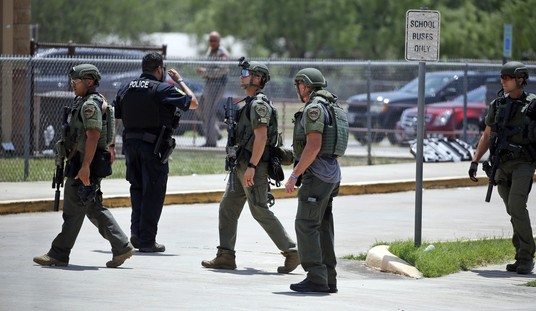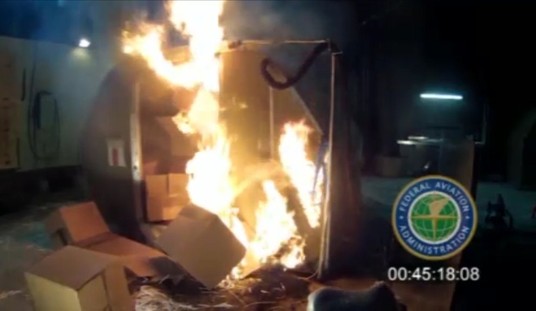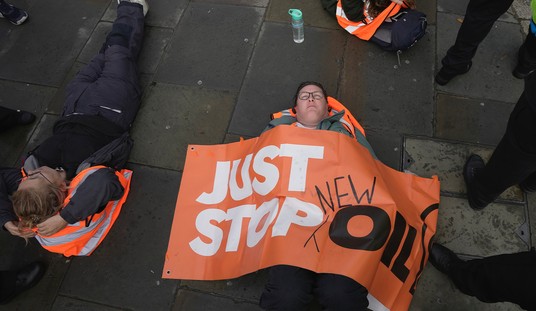On a December day in 1997, on Madison Avenue, a hail of masonry rained down from a faulty facade above, frightening hundreds and injuring two—a 3-year-old who sustained a minor cut and a man who was also cut but refused medical attention. Authorities blocked off the street to assess the problem, which turned out to be corner-cutting by the contractor on brick work later aggravated by another contractor’s project, according to New York Times reporting at the time.
After the accident, the race was on to add new regulations to prevent such mishaps. An admirable goal, to be sure, and one that was hard to argue with in the wake of this incident, minimal though the damage luckily was. New York City had already passed facade inspection regulations in 1980 after an incident with more tragic consequences— Barnard student Grace Gold died when she was hit by falling debris from a Columbia building.
Mayor Rudy Giuliani ordered an investigation into the problems at 540 Madison Ave., and by March of 1998 was signing Local Law 11, a much stricter amendment to 1980’s regulation. In the signing ceremony, Giuliani declared, “The purpose of this bill is to ensure the safety of the public, including pedestrians and individuals inside buildings, as well as adjacent property from damage caused by falling portions of exterior walls.”
If you’ve ever walked the streets of New York, you’ve no doubt noticed the ubiquitous “sidewalk shed,” set up under scaffolding to protect pedestrians from the work done above—work required by, you guessed it, Local Law 11. Many such structures are temporary, but last week, the New York Times published a feature story on a particular scaffolding. Now a decade-old fixture of a corner in Harlem, it has become a blight on the neighborhood and a haven for illegal and destructive activity, according to community activists.
They are supposed to catch debris from repairs overhead.
But sheltering Mr. Scott and his fellow transients has become the raison d’être for the sidewalk shed at the corner of Lenox Avenue and 123rd Street in Harlem.
This month it is entering its second decade. The moldering structure’s first 10 years, neighbors say, passed without ever being tested by significant construction overhead.
With its murky corners and tiers of blue piping, the shed has become a jungle gym for strapping men and a hideaway for drug deals. Evenings feature camaraderie among street friends, occasional outdoor sex and the usual neighborhood drama, Mr. Scott said last week, adding that it can sometimes escalate into brawls. A few steps away from the curb that the group uses as a bathroom, young families try to dash into their brownstones without catching a whiff — an impossible task on stifling summer days.
The shed is emblematic of the unintended consequences of well-meaning regulations, which can cost city residents and property owners thousands, and ironically, make parts of the city less safe, not more, hurting the poor and unconnected more than those in tonier neighborhoods.
So, how did it happen? The Times admirably illustrates the on-the-ground blight that is this sidewalk shed, and mentions Local Law 11, but fails to explain how the city came to have, by one estimate 189 miles of sidewalk shed.
At the time of its passage, though everyone was publicly on board because safety, some industry experts wondered about the costs. Other powerful industry interests were part of the Building Industry Advisory Council, which helped draft the regulations, which is common much of state and federal regulation making. If I had to guess, I’d bet the Building Industry Advisory Council is populated by large, moneyed builders who can handle the hit of new regulations, thereby giving them a leg up on smaller up-and-comers who might be quashed by the cost of new rules.
“I’m not sure anybody really knows how expensive this is all going to be,” said James G. Samson, a Manhattan real estate lawyer… “This is going to be a major-league expense for many buildings,” Mr. Samson said. “Just look up and down Broadway. All that wonderful ornamentation and all those cute little gargoyles are now going to have to be inspected.”
Local Law 11 changed a lot and covered 10-12,000 buildings, according to New York Sun reporting. As the New York Times reported at the time in language more understandable than the law itself:
Mr. Samson explained that under the original Local Law 10, exterior walls within 25 feet of a pedestrian walkway or public space had to be inspected every five years. In practice, he said, that usually resulted only in the inspection of the front facade and perhaps a side wall or two.
Under Local Law 11, however, virtually every exterior wall of every building taller than six stories will have to be inspected every five years. Moreover, Mr. Samson said, while Local Law 10 applied only to walls over six stories high, Local Law 11 requires inspections of all four walls even if only one wall of a building meets the height requirement.
In addition to those changes, Mr. Samson said, Local Law 11 also requires “hands on” inspections of any ornamental cast-stone or terra-cotta cornices or decorations that project more than six inches from the face of an exterior wall. The “hands on” requirement, he said, means that inspections of such building elements must be conducted close-up — from a scaffold or platform — rather than with binoculars or telephoto lenses from nearby vantage points, as was permitted under Local Law 10.
The law also tightened classifications for potential problems on facades. The old law allowed a potential issue to be reported as a “precaution” with a recommendation for monitoring. The new law allowed only classifications of “safe,” “unsafe,” or “safe with a repair and maintenance program.” Hence, SWARMP— one of those horrific acronyms that sends chills down the spines of anyone subject to such a regulation and a look of utter disinterest for the vast majority who just thought we passed a keen safety law in ’98 and never thought about it again.
Relatively minor and superficial problems that used to fall into the monitoring category became SWARMP. Far more walls to inspect, far more required repairs, and a liability minded brigade of private inspectors loathe to mark anything “safe” that could be dumped into the SWARMP category. Scaffolding and sidewalk sheds had to be erected immediately for anything “unsafe” and repairs made within the five-year period between inspections for anything SWARMP.
There was no staggered inspections schedule, either, so every five years, a rush on inspectors and contractors for 12,000 buildings drives up the cost of maintaining a building. The tyranny of SWARMP:
”I have over 100 buildings right now that have items in that category,” Mr. Varone said. ”And the minute I file a report for those buildings, they are going to be treated as if they have active hazards.”
In fact, Mr. Varone said, since most buildings in the city had items that were listed as safe with repair and maintenance in their last report — which means that they must be corrected by Feb. 21 — owners are now finding it virtually impossible to find contractors who can perform high-quality work at reasonable prices in time to meet the deadline.
And, again, it’s not just the big developers and landlords who are affected by these rising costs. It turns out even modest co-ops are subject to both regulations and the laws of supply and demand, leading to serious new price tags for the already expensive prospect of owning property as a regular New Yorker:
Mr. Caplan, 31, has been subject to two assessments in as many years – the first assessment was levied about two years ago to repair the pre-war building’s plumbing system; the second was imposed just recently to pay for façade work tied to the 1998 law. Letters placed under doors notified unit owners of forthcoming assessments, he said.
Combined, these charges are costing Mr. Caplan, a magazine writer, $300 a month in addition to his monthly maintenance. “It’s definitely an added expense, and there’s little you can do about,” he said. “It seems like this is just part of owning an apartment in the city.”
The president of a cooperative on East 67th Street, Bruce Lee, said exterior maintenance would likely force the board to assess tenants in the 80-unit building early next year, adding: “We know that there is going to be a charge, but don’t yet know how much.”
Mr. Lee, a 75-year-old author, said that leading up to the last five-year deadline, shareholders in his building owed an average of $6,000, which could be paid off in installments over three years. He said the law was a “necessary evil” because so many buildings would otherwise put off making major repairs to keep down costs for its residents. “If you’re going to cut the budget, building maintenance is often the first thing to go,” he said.
Apartment owners who are not able to afford the assessments may be able to negotiate a less-formidable payment structure with their building’s board or management company. “If an elderly person on a fixed income came to us, we might let them pay it out over a longer period of time,” a board member of a West 55th Street cooperative Iris Shorin, 64, a real estate broker with DJK Residential, said. “We’d certainly be kind, but we couldn’t waive it altogether.”
A shareholder of an Upper East Side cooperative, Albert Weil, 64, said the cost of exterior maintenance seems to have nearly doubled in the past five years. “Essentially, there are very few contractors who do this kind of work, and we’re really at their mercy,” Mr. Weil, an insurance broker whose building is drawing on its reserve funds to pay for the required work, said. “It’s one of these situations, where if you don’t like their bid, there are five or 10 other buildings that need work. These people have enough business.”
The president of the Council of New York Cooperatives and Condominiums, Marc Luxemburg, told The New York Sun that the city’s one-deadline-fits-all approach drives up labor costs. “It’s called the law of supply and demand,” he said. “There’s no statutory limit to how much a contractor can charge.”
Now, back to Lenox Avenue in Harlem, where a property owner has chosen to pay his shed and facade violations instead of repair the building and take down the shed. When residents ask the city to help them remove the shed, which now shelters more danger than it’s sheltering them from, they’re met with broken promises, stupidity, delays, and bureaucracy buoyed by perverse incentives. It all came together in this tragicomic development two years ago:
Residents were delighted in 2012 when the Lenox Avenue shed was abruptly removed over what they said the Buildings Department told them was a payment issue between the landlord and scaffolding contractor. But the Buildings Department then slapped the landlord with a violation for prematurely removing it, prompting him to drape a new shed over the corner.
The impetus was safety, said Alexander Schnell, deputy press secretary for the Buildings Department, adding that the owner still has not addressed problems at the facade. Until that work is completed, further construction is forbidden and pedestrians have to be protected by a shed. In April 2012, the owner’s architect, Tariq Siddiqui, told DNAinfo that they would rush the facade repairs and strip the scaffolding in five months.
Reached by phone this weekend, Mr. Siddiqui said, “We’re trying to get the permit,” and then hung up.
Did you catch that? The entity the community has been lobbying to remove the shed had it reinstated after it was removed because, according to them, the shed must stand to protect citizens from a facade in disrepair. Let’s say, for the sake of argument, that this facade is designated “unsafe,” the worst of the classifications instead of merely SWARMP. Even then, what are the chances the facade would have given way and hurt someone during the last decade when compared to the reality of the mandated scaffolding and shed demonstrably hurting this community for a decade?
Some will read this piece and immediately cry, “What does this crazy libertarian want? Anarchy? No building inspections at all? Does she wish for the good people of New York to die in droves under the weight of falling gargoyles and decorative cornices?” No, I don’t. What I would like is to offer that perhaps Local Law 11, passed with the good intention of preventing the vanishingly small possibility that you might be killed by falling masonry in the Big Apple, made maintaining a building more expensive and rents higher, put owning a home even more out of reach for regular New Yorkers, put more scaffolding and construction workers in the air and therefore at risk, and created sidewalk shed blights all over the city’s poorest communities. Maybe a reassessment could result in a slightly less onerous regulation that costs residents less money and doesn’t require as much shed, which is sometimes cheaper to leave up than to do repairs.
The people who call me a crazy libertarian will tell you the problem isn’t the regulation, but the scofflaws who refuse to comply safely because greed and racism. They’re partly right. There will always be scofflaws among us.
And those scofflaws, they’ll say, just require more regulations and proper resources for enforcing them. Those regulations and enforcement will come from the city of New York, of course. The same city that Mayor Bill deBlasio announced in August would speed removal of some 8 miles of unneeded scaffolding and shed left up by one of the city’s worst offenders— the New York Housing Authority. Scofflaws indeed.








Join the conversation as a VIP Member